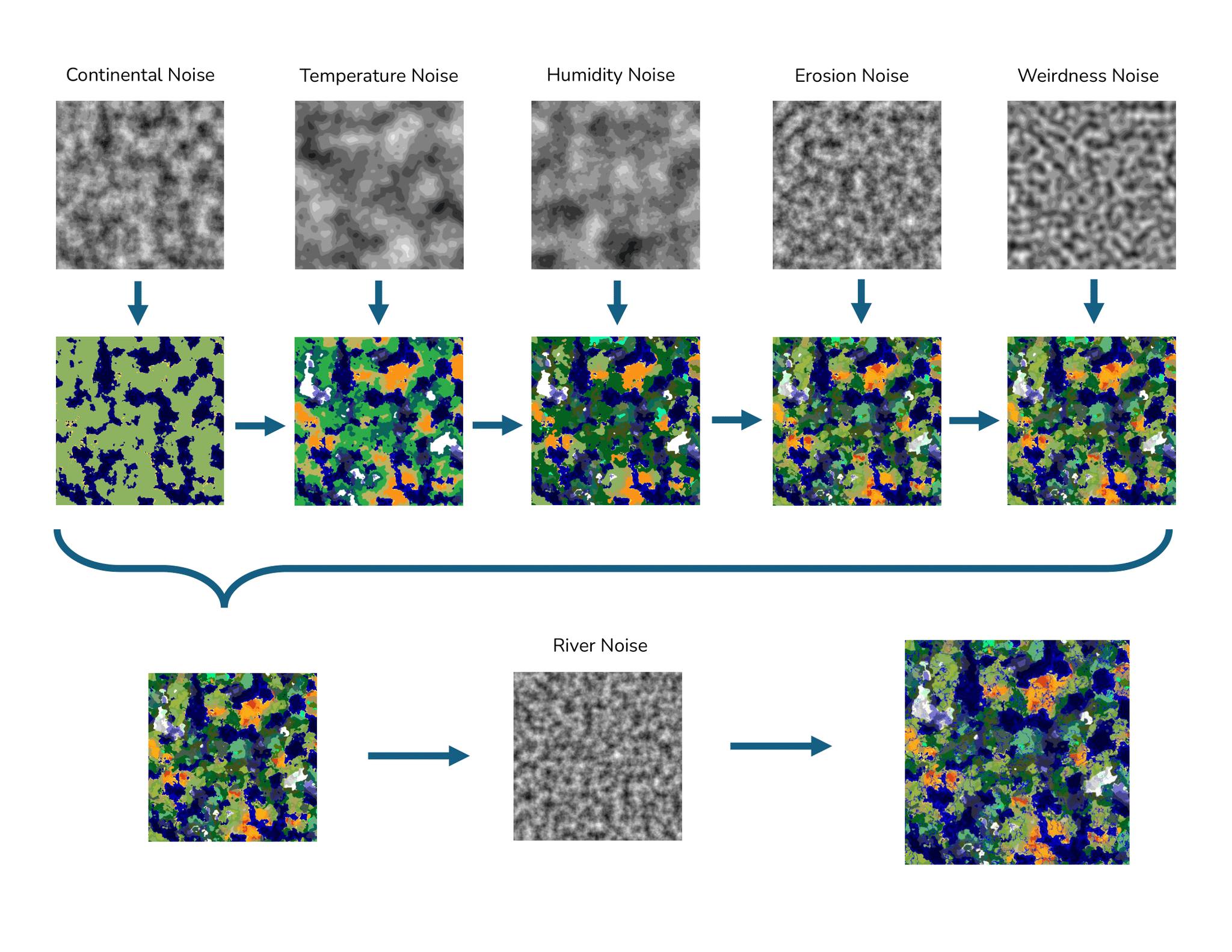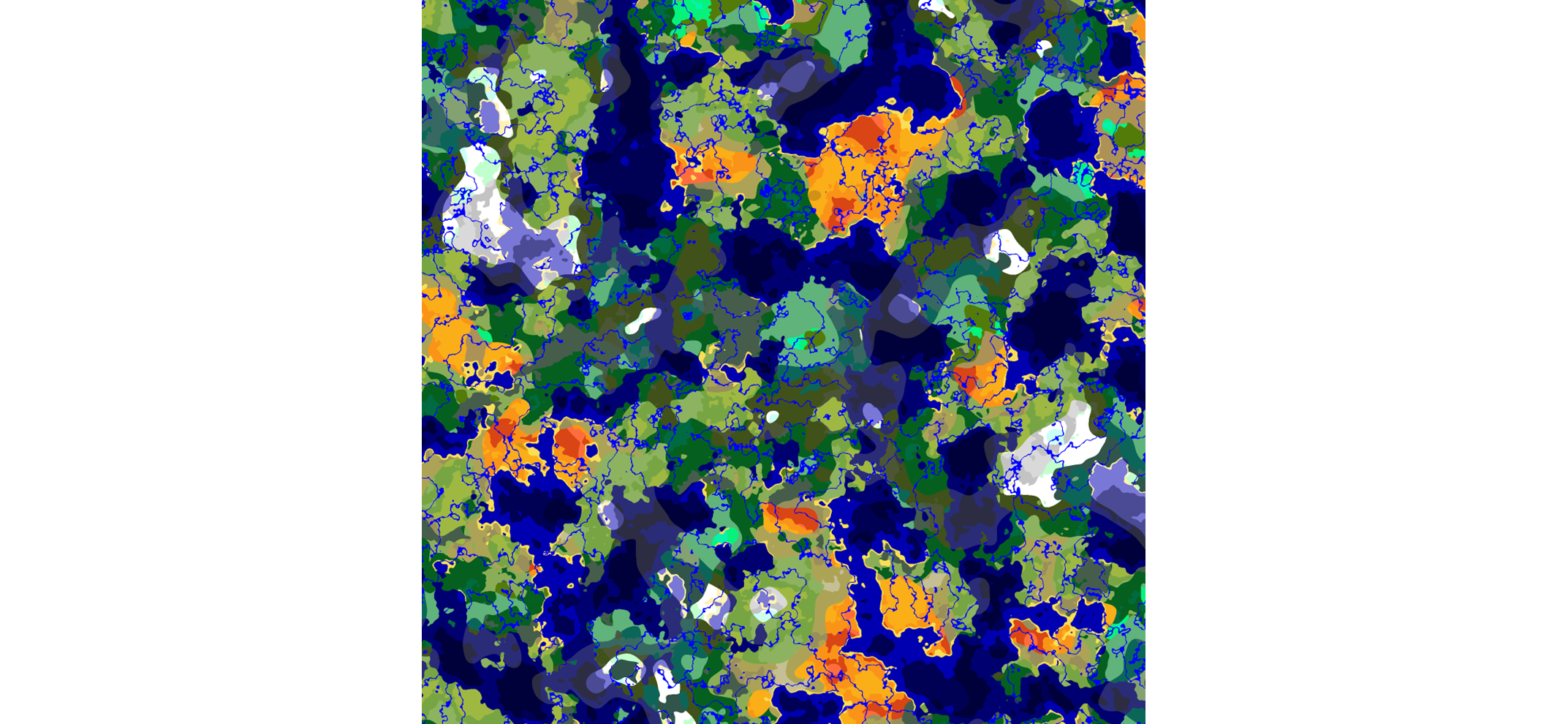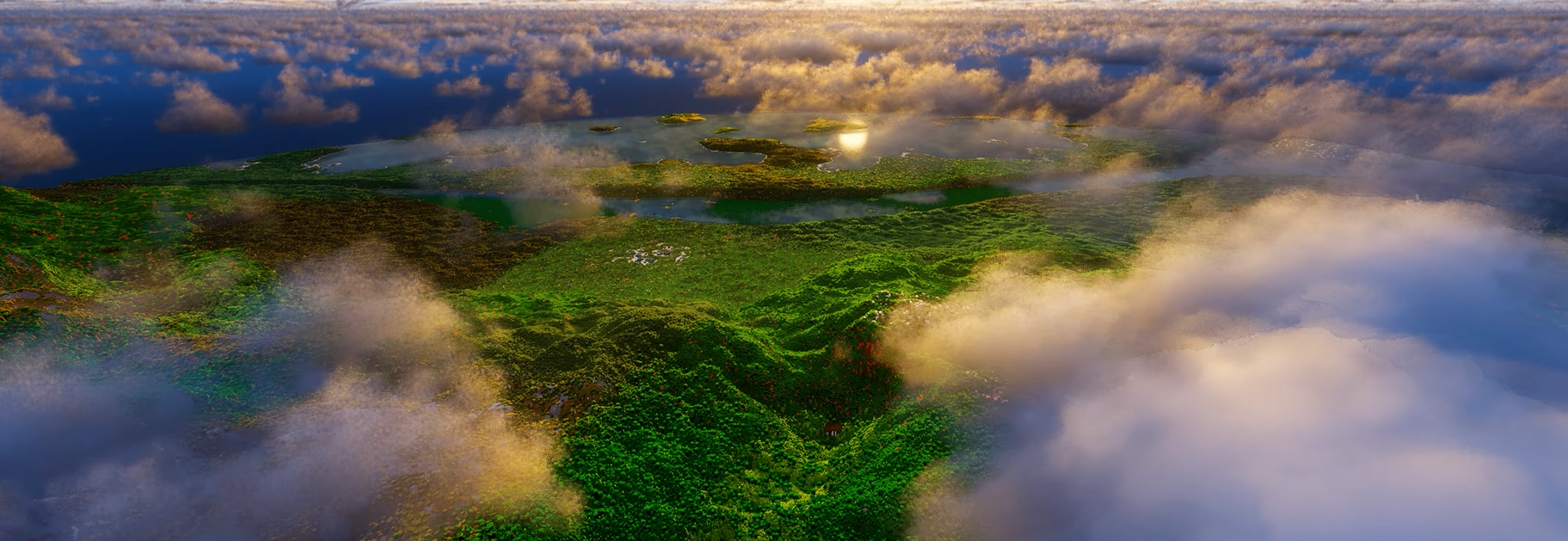Devlog #2.2: Minecraft-like biome generation
After finishing the terrain system, the next step was adding variety to the world. That’s where the biome map comes in—it decides where forests, deserts, snowfields, and other regions appear, making the landscape feel more alive.
At first, I looked at Minecraft’s old biome system, which builds full maps by stacking simple “layers.” Each layer takes the map from the previous step, modifies it, and passes it on. (You can see an overview of these layers here). To shape biomes, the layers often use white noise or Voronoi noise to create random distribution or sharp edges.
I tried recreating this system, but it quickly became complex, inefficient, and difficult to expand. So I stopped before completing it.

Fortunately, starting in Minecraft 1.18+, a new system was introduced—one that’s simpler, more flexible, and exactly what I needed.
🔶 New biome generation approach
Instead of stacking layers, it uses a set of 5 core parameters, each generated with FBM noise in the range -1 to 1:
- Temperature: Determines hot - warm - temperate - cold - freezing zones.
- Humidity: Determines wet - humid - moderate - semiarid - arid zones.
- Continentality: Divides sea, beach and land.
- Erosion: Creates plateaus or plains.
- Strangeness: Creates high mountains or valleys and rivers.
By combining these parameters, every biome is defined by thresholds across these ranges—creating smooth transitions and a much richer variety of landscapes.


Overall, this parameter-based system is far more flexible and scalable than the old layered approach. It not only makes biome generation easier to manage but also produces smoother transitions and richer variety—definitely a big step up from the old one.
YNL - Vozel (Devlog)
Minecraft-inspired project with optimized voxels, procedural biomes, and advanced shaders in a fantastical world.
| Status | In development |
| Author | Yunasawa |
| Tags | application, Unity, Voxel |
More posts
- Devlog #2.3: Burst-compatible biome proceducer86 days ago
- Devlog #2.1: Procedural Noise in Action86 days ago
- Devlog #1.4: Voxel-style Ambient Occlusion91 days ago
- Devlog #1.3: Hidden-face Culling96 days ago
- Devlog #1.2: Exploring Rendering Methods96 days ago
- Devlog #0.1: Control UIs, ToolTab & ToolViewDec 29, 2024
- Devlog #1.1: Base renderer & Multi-threadingNov 07, 2024

Leave a comment
Log in with itch.io to leave a comment.